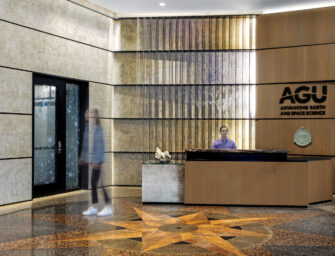AGU and AAS: Working Together to Expand the Understanding of Exoplanets

Dr. Lindy Elkins-Tanton
AGU and AAS are the fortunate recipients of a major grant from The Kavli Foundation that brings together our communities to advance the science of exoplanets. I’m proud to be a part of these institutions, particularly at critical junctures in with exoplanetary research, since this is exactly the kind of action that needs to be taken at the institutional level to help move the science forward.
Exoplanet science ranks among those discoveries that inspire humankind to look beyond and think above the daily mundane. While the pace of this research has been progressing at a gallop – including the announcement of a real Earth 2.0 which has garnered great attention – it’s hard to say where this excitement will lead us next. All we can do is state where the research is currently and what it suggests as we look to the future.
With the great minds from many disciplines within AGU and AAS working together, from fields as diverse as astrobiology to observational engineering we’re well poised and motivated to meet this challenge. Together, we must continue expanding upon what we have already learned about exoplanets and use that knowledge to better understand the galaxy and our own family of planets.
Until recently, we have spent centuries in the Medieval structure of a single researcher owning a topic within an institution, and commanding of a pyramid of people working more or less under their leadership. This structure has brought amazing discoveries and rapid progress but it has had unforeseen costs as each. discipline has diverged others and resulted in “silos” of researchers that no longer even speak the same language and cannot understand each other’s results – for example, what is a “metal” to a planetary geologist, and what is it to an astronomer? For example, I think a lot about what makes a planet habitable: its composition, temperature, magnetic field, atmosphere and volatile compounds, the presence of liquid water, internal structure and volcanism, and all the bifurcations that make for a future conducive to life “as we know it.” This is the view of a terrestrial planetary scientist, studying in detail the activities and processes of the Earth and of our nearby rocky planets, and applying what I have learned to exoplanets. Then, the astronomy community replies to me, “But look at the panoply of examples we’ve found that lie outside your exemplars!” And then the game is on. A grant like this one from the Kavli Foundation is helping break down these walls. We need so much more of this.
To make truly interdisciplinary progress, such as is needed to understand exoplanets, teams need to be assembled around questions that no single discipline can explain on its own. We need to understand a common language. In short, we need to prepare for more interdisciplinary, unexpected futures. The exoclimes conferences have shown that bringing these communities together really makes a difference, and now, AGU and AAS can greatly multiply this effect.
So bravo to these organizations, and to all who are interested in exoplanets. We have a chance to show a better way to open a new field, a way that will give more important results faster, and ask bigger questions.



There are no comments
Add yours